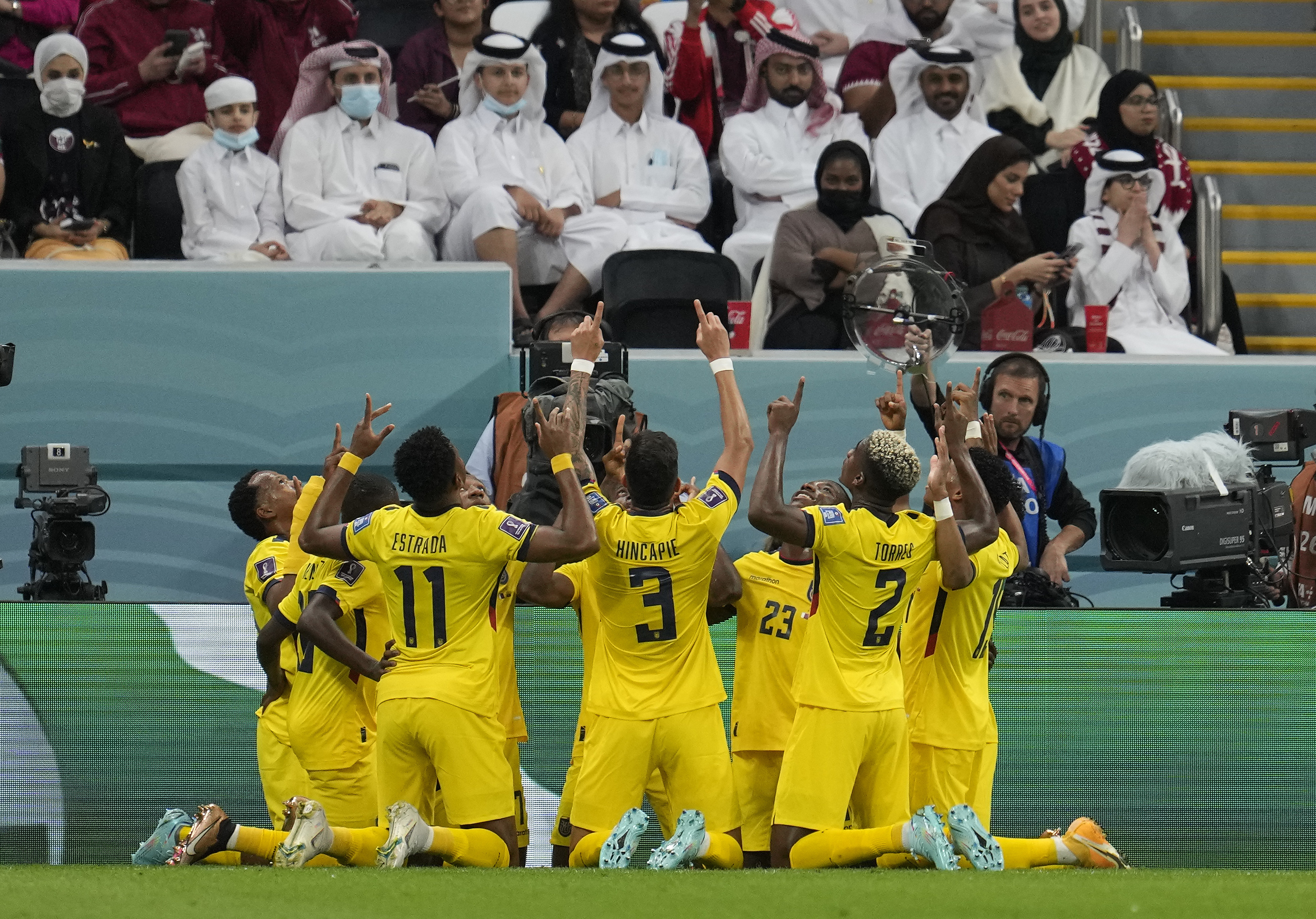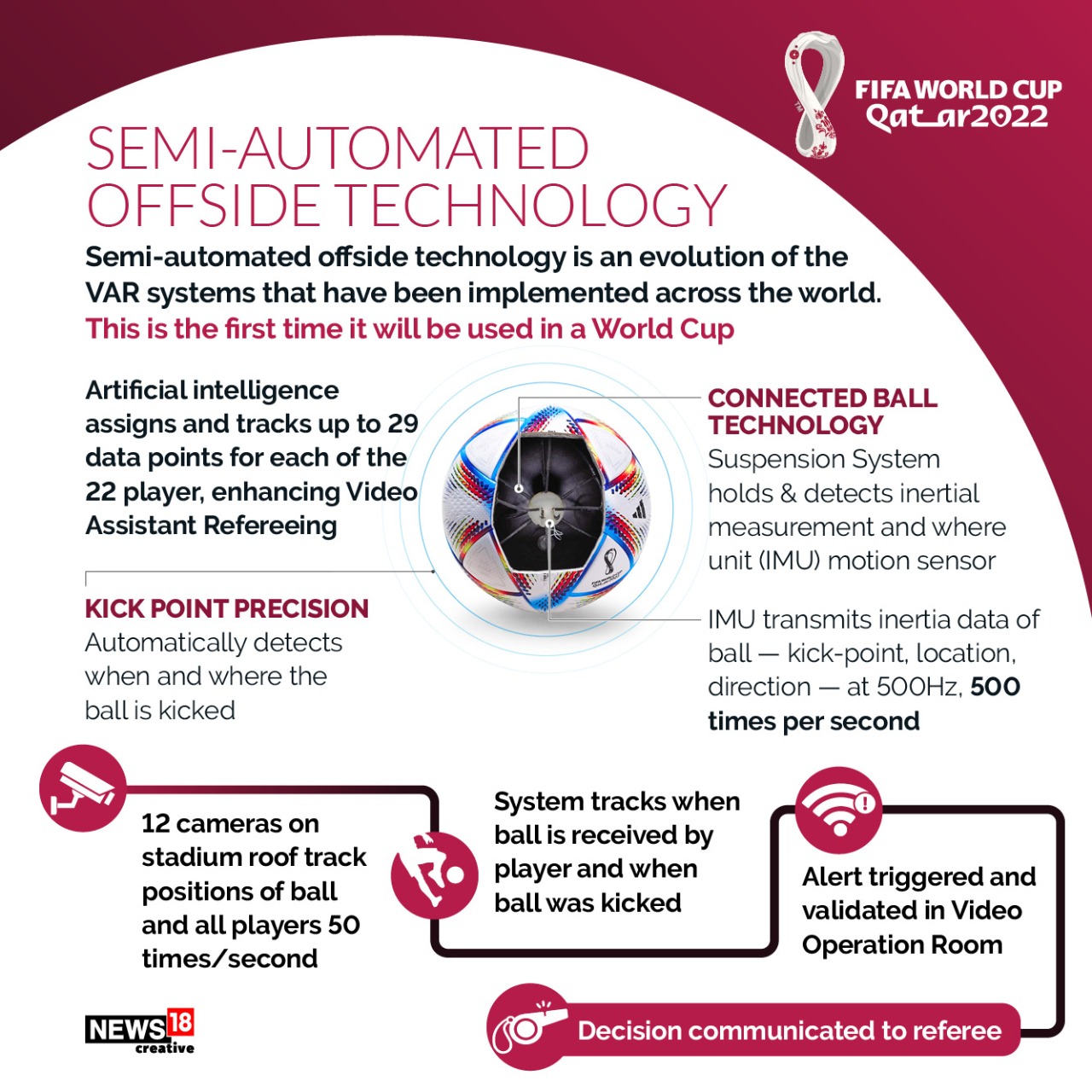[ad_1]
Only three minutes passed in the opening match of FIFA Globalism It was reported that the 2022 Cup was between hosts Qatar and Ecuador before the first goal of the tournament was ruled out for offside.
A header shot by Ecuador’s Enner Valencia was ruled out because the lower half of his right leg was in an offside position. While such close calls settled with the help of Video Assistant Referee (VAR) technology are fairly common in modern football, the speed with which they were adjudicated has surprised fans, he explained. Hindu in a report. Before the game resumed, a short 3D animation of the incident was shown. Quick decision making is made thanks to FIFA’s new semi-automatic stealth technology (sawed).
The semi-automated offside technology, announced in July, is already making an impression at the 2022 FIFA World Cup. The new technology mounts 12 dedicated cameras under the stadium roof to track the ball (which also contains sensors) and up to 29 data points for each player, 50 times per second, to calculate their exact location on the pitch, providing a support tool for both video match referees and on-pitch referees. All parties and parties involved in making the sneak calls are represented by 29 data points collected, Ken Kirschbaumer wrote for sports video collection.
The technology consists of two parts: a sensor inside the match ball (adidas flight) held in place with suspension technology, and existing tracking tools that are part of the VAR system as we know it, Hindu explained in its report. Kinexon, a German company that specializes in sensor networks and computing solutions, has created a small device inside the sphere that provides accurate location data as well as detecting the movement of the sphere in three dimensions. When the ball is hit, the data is transmitted in real time (at 500 frames per second) to a network of antennas installed around the court. In addition, 12 Hawkeye cameras have been strategically placed around the turf to shade both the ball and the players, while tracking up to 29 separate points on the human body. SAOT is a combination of a ball sensor and Hawk-Eye cameras, which FIFA claims enables extremely fast and accurate decision-making. These two data sets are fed into an artificial intelligence program, which generates automated offside alerts for match officials. This replaces the manual effort involved in restarting for minutes on end.
Accurate and automated detection of the trigger point is one of the most difficult challenges in developing advanced stealth technology. Kirschbaumer said possible solutions were being considered, including tracking data from sensor technology and video data from camera systems.
The system must correctly determine which part of the body puts the player in an offside or offside position. Human operators tend to choose different body parts for offside lines, according to accuracy tests. Progress has also been made in this area, with the automated system providing learning to properly model the player’s skeletal system. In the future, the algorithms developed for the system should be able to automatically recognize which part of the body caused a player to offend and how much.
In SOAT, the Inertial Measurement Unit (IMU) sensor is placed inside the official match ball, adding another critical component for detecting tight offside incidents. This sensor, located in the center of the ball, transmits ball data to the video playback chamber at a rate of 500 times per second, allowing for highly accurate detection of the kick point.
The new technology, which combines lateral and ball tracking data and employs artificial intelligence, sends an automated offside alert to video match officials inside the VOR whenever the ball is received by an attacker who was in an offside position at the time the ball was played by a teammate. Before informing the referee on the field, the video match officials manually check the automatically selected kick point and automatically generated offside line, which are based on the calculated positions of the players’ limbs. This process takes only a few seconds, allowing for faster and more accurate stealth decisions.
The positional data points used for decision making are generated in a 3D animation that perfectly illustrates the position of players’ extremities at the moment the ball is in play after the decision has been confirmed by Video Match Officials and the on-pitch referee. The animation, which will always show the best possible view of an offside situation, will be shown on giant stadium screens and made available to FIFA’s broadcast partners in order to inform all spectators as clearly as possible.
The MIT Mathematical Laboratory analyzed and validated data collected during online and offline tests, with TRACK at the University of Victoria scientifically validating the limb-tracking technology. A research team at ETH Zurich provides additional insights into the technological capabilities of multi-camera tracking systems.
Read all files latest commentators over here
[ad_2]
Source link



